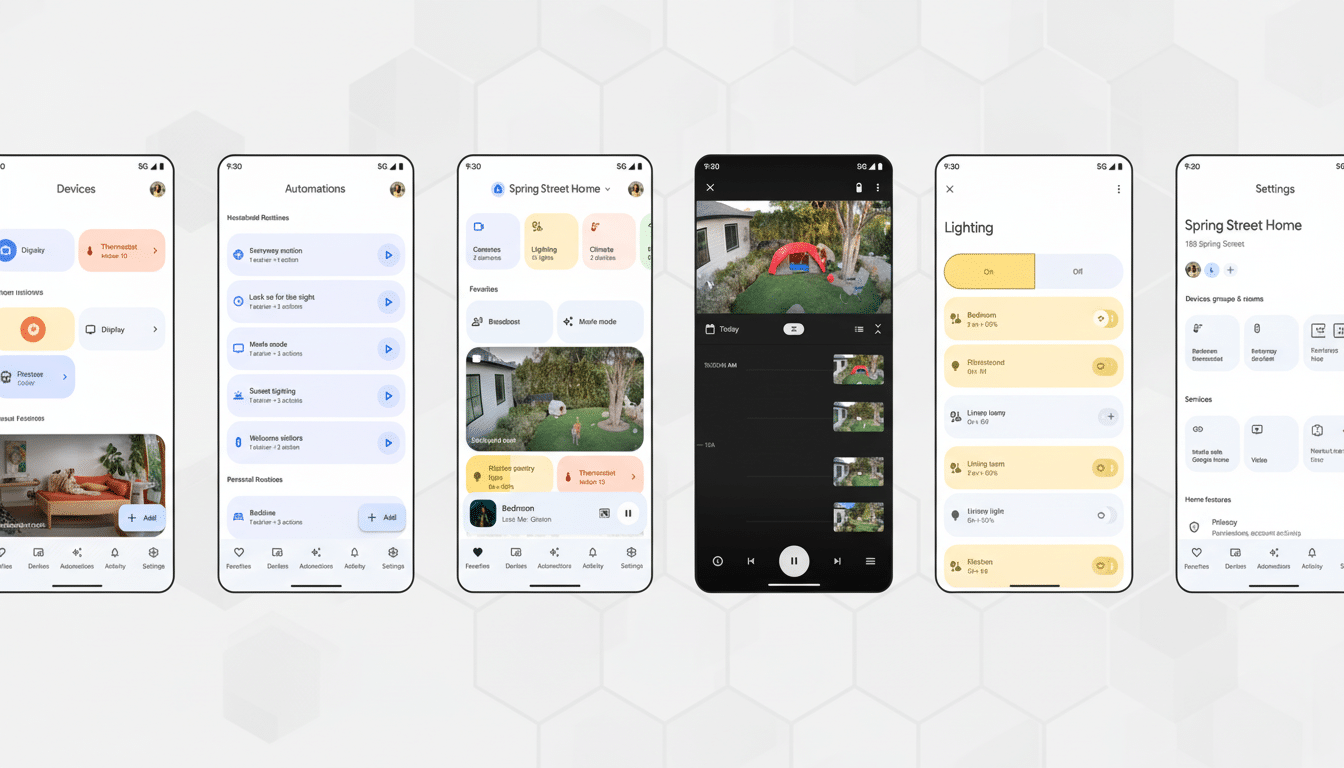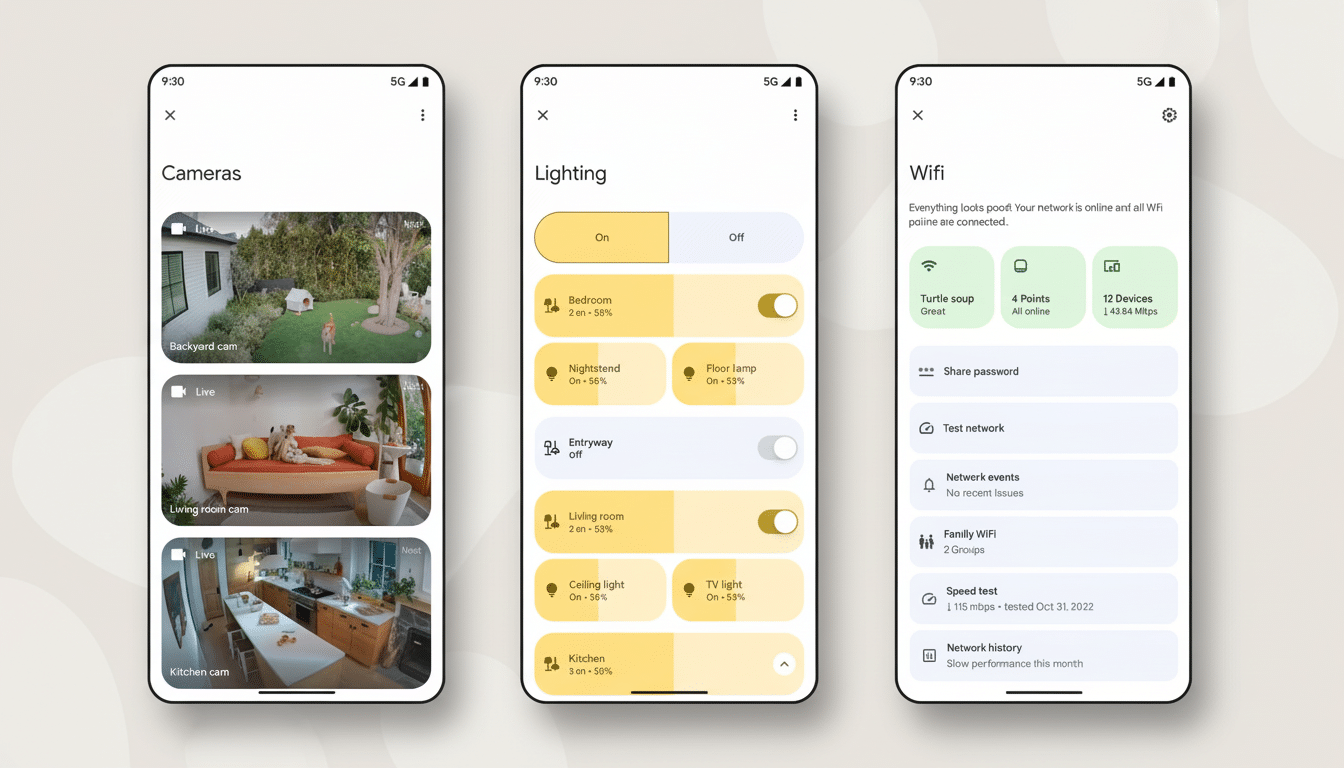Google may have leaked its next generation of Nest security gear in the Google Home app, with new Nest Cam Indoor and Outdoor models and what looks to be a wired Nest Doorbell. Those in-app assets feature names, images, and code references to higher-resolution video, fresh new colorways, and deep integration with the company’s Gemini AI.
What the Home app tells you
Strings and images in the latest build of the Google Home app give names to three devices: Nest Cam Outdoor (wired, second-gen), Nest Cam Indoor (wired, third-gen) and Nest Doorbell (wired, third-gen). Internal codenames (“linosa” for the outdoor cam, “ustica” for the indoor unit, and “rhodes” for the doorbell) appear next to high-quality renders that suggest these products are almost ready for release.

The shots align with the known Nest industrial design but show off new finishes. The Outdoor cam comes in Snow and Hazel, and the Indoor cam gets an additional color option, Berry, in Snow and Hazel. The wired Doorbell is showing in Snow, Hazel, and Linen. These match Google’s current color strategy we’ve seen with Nest and Pixel accessories, where soft tones and matte finishes are used to integrate hardware into home decor, rather than make them stand out.
Specs hinted so far
Within the app are references to improved 2K video capture for the cameras and doorbell, as well as a “Zoom and Crop” feature with up to 6 times digital zoom. That’s a significant bump beyond the recent Nest cams, which maxed out at 1080p; practically, 2K makes it easier to read license plates, faces and package labels at more typical porch and driveway distances, especially when you add in HDR and improved night vision.
References to Gemini features imply on-device and cloud-based smarts are headed to Nest video. Look for more summaries of events, natural language summaries (for example, distinguishing a delivery from someone who’s still at your house) and improved object classification. Google offers Familiar Face Detection with its subscription as already mentioned, but Gemini can extend that to scenario-level insight, like calling out when, to swipe another example, a package was dropped and then picked up.
Subscriptions and software
Code strings suggest a rebrand of the Nest Aware subscription as well to “Google Home Premium,” with an extra tier “Google Home Premium Advanced.” Today, what Nest Aware offers includes event history, Familiar Face Detection and enhanced alerts, with the ability to tack on 24/7 video history for wired cameras at higher tiers. Renaming would bring the service more in line with the Google Home ecosystem and create space for AI-first features powered by Gemini, although no word yet on pricing or absolute feature splits.
One practical angle to watch is how much of the new intelligence functions locally, versus how much works from the cloud. Google’s been doing more for processing on device for both speed and privacy reasons, and the language in the Home app around “Zoom and Crop” suggests server-side improvements as well. The saving will be less material for those that are particularly mindful of bandwidth caps, and for those that would rather have the precious video analysis be performed on the device, not in the cloud.

How it fits Google’s strategy
These cameras fit into a larger push to bring Gemini to home hardware, which got teased with a brief glimpse of a Gemini-equipped Nest device during the Pixel 10 launch. The consolidation of the experience within the Google Home app, rather than further dividing the role of legacy Nest and Google services, has been a multi-year effort, with the app increasingly taking on the management of device setup, automation, and video review over the past two years.
It is also long overdue for a jump to 2K. Giant rivals like Arlo’s Pro series and Eufy’s high-end cams frequently give you 2K — or better, Ring still sticks mostly to 1080p but flexes its muscles with strong motion zones and accessories. And independent lab tests by organizations like Consumer Reports have consistently found that while resolution matters, overall image quality is just as dependent on the size of a sensor, quality of a lens, high dynamic range and low-light performance — categories where Google’s computational chops might have something to say.
Competitive context and timing
Market watchers are predicting a launch window, before the peak shopping season, around the time Google usually updates Nest hardware. Red flags would be FCC filings, inventory leaks that appear in retailers and server-side configuration updates made in the Home app. When Google last refreshed its wired doorbell and indoor cam lines, channel partners started preparing their displays weeks before details were officially announced.
The home security category has been getting stronger as homeowners purchase video doorbells and outdoor cameras for porch pirate deterrence and awareness of neighborhood happenings. Omdia and IDC have observed that AI-enabled features — including person detection, smart activity zones, and package alerts — help drive subs attachment and reduce false alarms, angles that help explain Google’s reported move to unified “Home Premium” branding.
What to watch next
It’s worth seeing if the 2K upgrade comes along with higher bitrates, improved infrared arrays or onboard storage options, which all affect real-world clarity. It’s also worth watching: whether or not any restrictions of video history are placed on the new subscription tiers and if things like Familiar Faces and advanced alerts are confined to one of the higher plans. If those Gemini-powered highlights come through as teased, they might truly cut reviewers’ hours of footage down to the moments that matter.
Until then, the best indication is taken from Google’s own app. If history is any guide, that much detail within a Google Home build often signals that new Nest hardware is right around the corner.

